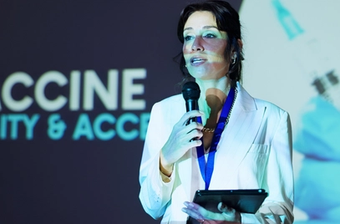
Avoiding Corporate Event Planning Disasters:
How to Protect Your Budget and Reputation
Planning an in-person corporate conference in the tightly regulated world of healthcare and pharmaceuticals is a high-wire act. One misplaced decimal in the budget, a compliance lapse buried in a speaker’s slide deck, or a communication breakdown with a crucial vendor can snowball into fines, public scrutiny and a bruised balance-sheet. The encouraging truth is that most disasters are preventable when organisers embrace a proactive, structured approach anchored on four pillars: pre-event planning, communication, budgeting and design.

1. Pre-Event Planning: Build the Right Foundations
Align stakeholders and define success
Start by convening every function with skin in the game—medical affairs, marketing, legal, compliance, procurement and agency partners—to agree measurable objectives and KPIs. Use a RACI chart so everyone knows who is Responsible, Accountable, Consulted and Informed at each milestone. A shared scorecard prevents scope creep, streamlines decision-making and provides a yardstick to prove ROI once the final delegate has gone home.
Translate those goals into a high-level programme outline and a draft budget. Present both early for sign-off so senior leaders cannot later claim they were “never told” about costs or content direction. Many planners schedule a one-hour objectives workshop followed by a written summary circulated within twenty-four hours. The paper-trail protects you if priorities shift mid-project.
Bake in regulatory compliance
Pharmaceutical meetings must comply with the PhRMA, EFPIA and relevant national codes that govern hospitality caps, HCP transfers of value and scientific balance. Engage the compliance team from day one to build a checklist covering:
- Venue suitability – luxury resorts, golf courses or spas may be ruled out as inducements.
- Transfers of value – log every coffee, taxi and overnight stay provided to healthcare professionals.
- Content vetting – ensure data are peer-reviewed, balanced and accompanied by full disclosures.
- Promotional boundaries – keep scientific sessions brand-neutral, reserve product branding for the exhibition hall.
Add the checklist to your master project plan so no task is marked complete until compliance has ticked it off. “Baking-in” beats retrofitting, and it is far cheaper than an audit-driven rewrite.
Scenario planning and contingencies
Identify every plausible risk, rank by likelihood and impact, then write counter-measures. High-impact items—speaker cancellations, venue closure, internet failure—deserve full contingency plans, including budget cover. Allocate at least 10–15 % of total spend to a protected contingency pot; without this cushion, last-minute fixes often come straight from profit margin.
Run a tabletop exercise six weeks out. Walk through scenarios such as “fire alarm during keynote” or “international flight disruption” and assign responsibilities: who guides delegates outside, who salvages the recording, who drafts the holding statement for social media? A one-hour drill exposes gaps far more cheaply than discovering them live.
2. Communication: Keep Everyone in the Loop
Internal comms: one source of truth
Create a cloud-based playbook that holds the agenda, floor plans, supplier contacts, risk log and nightly change notes. Pair it with a project-management platform to track granular tasks, and nominate a communication lead for each work-stream so blockers surface early.
During build-day and show-days, operate a dedicated messaging channel—Slack, Teams or WhatsApp—for real-time fixes. A channel named #on-site-alerts lets any staffer post “projector failed in Breakout B” and instantly summons the AV crew, avoiding the chaos of phone-tag. Ten-minute daily stand-ups using the yesterday–today–road-block format keep everyone aligned; major decisions are logged in the playbook for off-shift teams.
External comms: vendors and delegates
Suppliers thrive on clarity. Issue each vendor a concise guide: load-in schedule, compliance rules (no unapproved logos, no alcohol donations, meal-value ceilings), security procedures and on-site contacts.Hold brief weekly check-ins and request photo proof of progress—stage-set renders or catering test plates—so errors are corrected before they cost money.
For delegates, plan five touch-points:
- T-12 weeks: Save-the-date plus hotel-block details
- T-6 weeks: Draft programme and speaker highlights.
- T-3 weeks: Logistics pack (travel tips, dress code, city guide).
- Event week: App download link and QR code for seamless check-in.
- Post-event (48 h): Thank-you email, slide-deck download and three-minute feedback survey.
Timely updates slash “Where do I park?” emails and registration-desk queues, freeing staff for higher-value tasks.
3. Budgeting: Control Costs, Maximise ROI
Build a granular budget—then police it
Itemise every expense, from CME accreditation fees to lanyard clips. Tag an owner for each line and demand justification for variance. A finance controller should update actuals weekly and highlight overspends above three per cent. Early visibility lets you tweak quantities - fewer floral centre-pieces, shorter room hire - before costs spiral.
Prioritise high impact spend
Apply a ruthless filter: Will this purchase advance the objectives? Invest confidently in keynote caliber, engagement tech and robust AV, because those drive learning and satisfaction. Dial back ornamental décor or luxury giveaways that rarely appear in feedback forms.
Negotiate hard. Venues often waive basic Wi-Fi or throw in staging if you meet a food-and-beverage minimum. AV companies may bundle backup equipment at low marginal cost if asked upfront. Maintain a concession log so promised perks are honoured on-site.
What if costs spike?
Despite diligence, foreign-exchange swings or freight delays can blow a line item. Detect early with live dashboards, then brief sponsors or executives on root cause and preferred remedy.Trim smart—swap a plated lunch for a quality buffet, shorten evening entertainment, or repurpose surplus marketing budget. Alternatively, secure last-minute sponsorship for Wi-Fi or a coffee cart—branding opportunitiessuppliers welcome.
Document decisions openly; stakeholders value honesty more than polished excuses. A controlled course-correction preserves reputation and yields lessons for next year.
4. Design Elements: Craft a Credible, Inclusive Experience
Cohesive, compliant branding
Visual consistency builds trust, but in pharma you must separate corporate identity from product promotion. Use a unified colour palette, fonts and tag-line across signage, slides, app and swag, yet keep scientific sessions brand-neutral.Every creative asset should pass medical-legal review to catch wording or imagery that could be construed as promotional.
Experience flow and comfort
Crowded lobbies and marathon lecture blocks sour even the strongest agenda. Sketch the delegate journey on a floor plan: unobstructed routes between plenary, catering and breakout rooms; coffee stations that spark networking; and clear signage visible from wheelchair height.
Structure the timetable for cognitive stamina—ninety-minute learning sprints followed by thirty-minute breaks. Insert wellness corners: stretching sessions, hydration bars and quiet pods for email triage. Provide ergonomic seating and balanced menus (vegetarian, low-sugar, gluten-free), which healthcare professionals especially appreciate.
Accessibility and inclusion
Choose venues with step-free access, hearing-loop capability and high-contrast way-finding. Ask registrants about accessibility needs at sign-up and action requests promptly, whether that means reserved front-row seating for lip-readers or gluten-free snacks. Provide a quiet room for neurodivergent attendees and avoid strobe lighting at evening receptions.
Inclusivity reduces legal risk, supports ESG targets and—most importantly—shows respect, boosting Net Promoter Scores.
Content credibility
Curate fewer, stronger sessions. Vet abstracts for scientific integrity, confirm speaker disclosures, and rehearse presenters on timing and tech.Blend formats—keynotes for inspiration, moderated debates for depth, case clinics for practical application and live polling for interaction. Real-time Q&A lets clinicians challenge data, enhancing perceived value.
If the meeting is hybrid, run dual production crews: one focused on the room experience, the other on remote-audience chat and camera angles. Top-tier pharma conferences now report parity of satisfaction between in-person and virtual delegates.

Conclusion: Disaster-Proof Your Next Healthcare Conference
Event crises rarely strike without warning; they germinate in overlooked details—an unsigned compliance form, an ambiguous vendor brief, an unmonitored cost centre. By adopting the four-pillar framework above, you turn potential hazards into managed variables. Stakeholders will trust you with their brand, delegates will feel their time was well spent, and regulators will find little to criticise.
Plan early, communicate clearly, measure relentlessly and iterate after every show. Do so and you will not merely avoid disaster, you will stage a conference that advances science, strengthens relationships and elevates your organisation’s reputation.
References
1. The Ultimate Guide for Successful Pharma Event Management
2. Navigating Pharmaceutical Compliance: Best Practices for Event Planning
3. The Hidden Costs of Poor Event Management in Pharma (And How to Avoid Them)
4. Contingency Planning and Risk Management in Events
5. Internal Communications Tips for Effective Event Management
6. Attendees, Vendors and Sponsors: Communicate Before, During and After Your Event
8. Achieving Budget Control in Event Management
9. Exceeding Budget in Event Management
10. Healthcare Event Planning & Marketing Strategies
11. 7 Best Practices for Event Accessibility
Contact us today to discuss how we can collaborate to design and create your next brand campaign.We'll be delighted to help!

